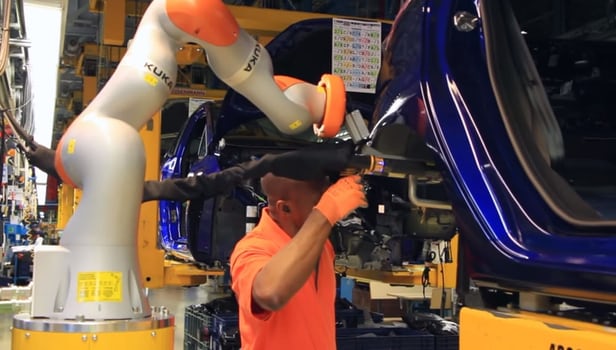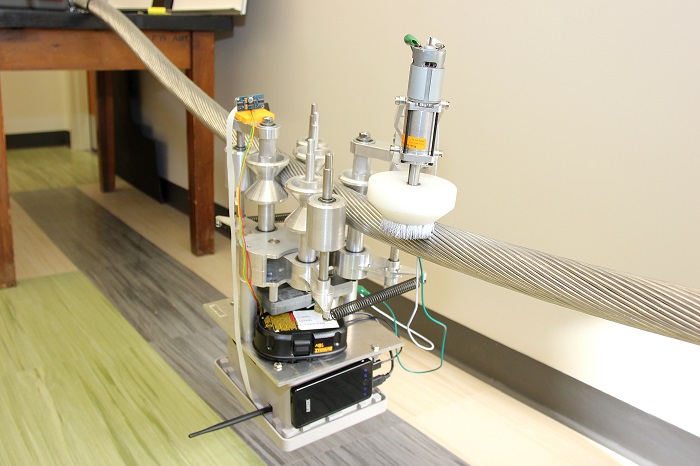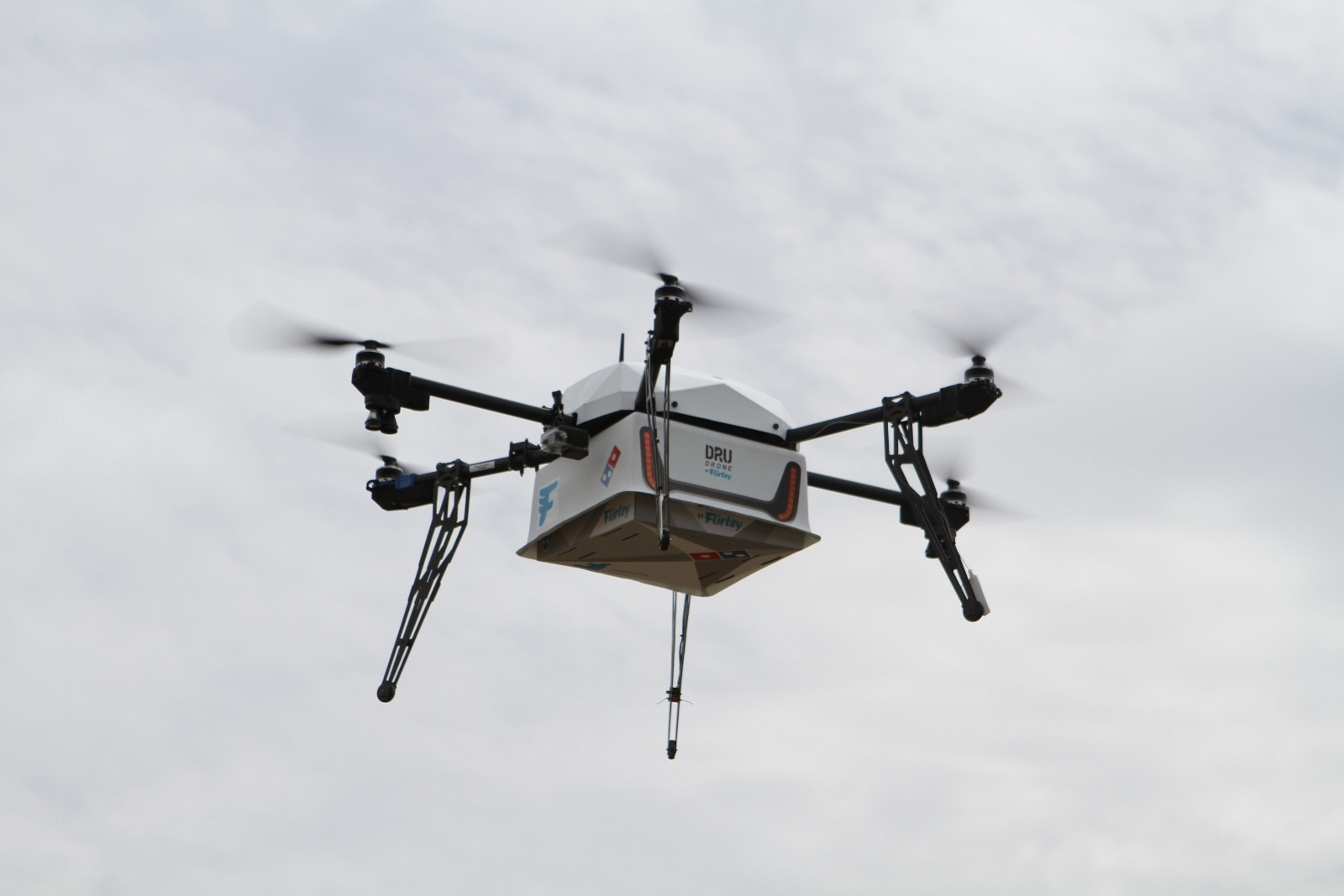Robots replacing fast food workers, giant mechanical bots, smartphone-powered air hockey robotic champions, and ingestible origami medical robots were once creations that belonged to sci-fi writers. But if this past year’s robotic advancements are any indication, fiction can become reality sooner than we think. The question is: what kind of future do they foretell? Is it something relatable to the Terminator franchise, or a calmer atmosphere where humans and robots co-exist in harmony? Let’s break it down.
Co-bots in the workplace
Will robots ever make human workers redundant? While this question can keep you pondering, it depends on how adaptable human beings are. Of course, the move to industrial automation will see low-skilled manufacturing jobs disappearing, and a UN report estimates that developing countries will be hit the hardest. But a scenario such as this doesn’t mean the end of work for human beings, as the most intelligent and hard-working robots would want us to believe. Realistically, the growing trend of using co-bots in industrial applications gives us a glimpse of what working with robots might look like in the future.

Image source: Ford.
Currently at the San Francisco start-up, Zume Pizza, and at the Ford Motor Company’s factory in Cologne, Germany, co-bots are being deployed alongside human employees to take care of repetitive, menial tasks, such as heavy lifting. These robots are also programmed to ensure their human co-workers’ safety — they stop moving when their sensors alert them to any body part that’s in their way.
On the bright side, jobs are being created instead of cut. According to Ford, this move has added 28,000 jobs in the last five years. Better yet, an MIT study at a BMW factory reported that human and co-bot teams are more productive than all-human or all-robot teams.
That being said, human-robot collaboration isn’t limited to manufacturing duties. In an age of expanding to-do lists, some organizations are helping to lighten the load of overwhelmed staff by assigning robots tedious tasks, such as in libraries located in Singapore, where they’re being used to hunt down misplaced books.
These examples show that robots aren’t necessarily after our jobs, but are paving the way for the creation of new roles while handling the timely tasks that are taken for granted. Because of co-bots, new and more conceptual jobs for future generations will automatically be created.
Robots teaching robots (is nothing to worry about)
Although it’s true that we have a long way to go before housekeeping robots can assist us, such as the beloved Rosie in The Jetsons , continuing advancements suggest that we’re slowly but surely on our way there. A major challenge that has slowed this advancement is robot dexterity. Simple motions such as getting a glass of water are still too complicated for the majority of bots. Before they’re deployed in many different workplaces, it would be wise to solve this problem first.

Image source: University of Washington.
Researchers have been working with robots to improve their dexterity with the help of self-learning algorithms. At the University of Washington, scientists have developed a five-fingered robotic hand that can mimic human movements and improve its performance on its own, and Google is attempting to speed things along by combining cloud robotics and deep learning to help robots learn and share new skills over a network. Studies have shown that robots learn quicker when they work in a group as opposed to working alone.
“Step aside, humans, we got this” — robots venturing to places where humans fear to step foot
From underwater droids detecting and neutralizing explosive devices, robots demolishing high-risk buildings, and even robots eliminating the dangers of inspecting power lines, 2016 has shown the people of the world the invaluable role that robots are set to play in disastrous and high-risk situations.

Image source: University of Georgia.
One notable bot is Boston Dynamics’ humanoid robot, Atlas, which has undergone numerous iterations since it was unveiled in 2013. It’s capable of opening doors, balancing itself unaided on the edge of a plywood board less than an inch thick, and can navigate uneven terrain. Thanks to a new algorithm installed by the Florida Institute for Human & Machine, it can also gauge its terrain and adjust its foot position and weight accordingly, just like a real human. Atlas is still learning, but a big test would be seeing what it can do during a real-time emergency situation.
Progress in this field of robotics means Atlas might one day be joined in its search-and-rescue missions by a team of robots, such as Harvard’s flying RoboBee, which can swim and conserve energy — a useful function if deployed in military surveillance or search-and-rescue operations.
Delivery bots
This past year has been a dream come true for delivery robots. Whether you’re thinking pizza or restaurant takeout, the fact is that more people than ever are ordering food online, opening a new world to the food-delivery business.

Image source: Dominos.
But can delivery bots offer an edge over drones and traditional couriers? Starship Technologies, based in London, thinks so. The company made the argument that its robots are cheaper, faster, and more environmentally friendly than automobiles, and they would benefit small businesses who can’t afford to hire delivery drivers.
Whether delivery bots can keep a clean record sheet in sketchy or dense neighborhoods is another question, but the fact that fast food chains such as Dominos are getting in on the action suggests that there is a market for an alternative delivery system.
As for the future?
Technology in the field of robotics is improving at a quick pace, and it goes without saying that we’re living in interesting times. The near future will see human-robot relations being placed under further scrutiny as co-bots become more common.
Until then, happy 2017! It’s another year of incredible possibilities.
Advertisement
Learn more about Electronic Products Magazine





